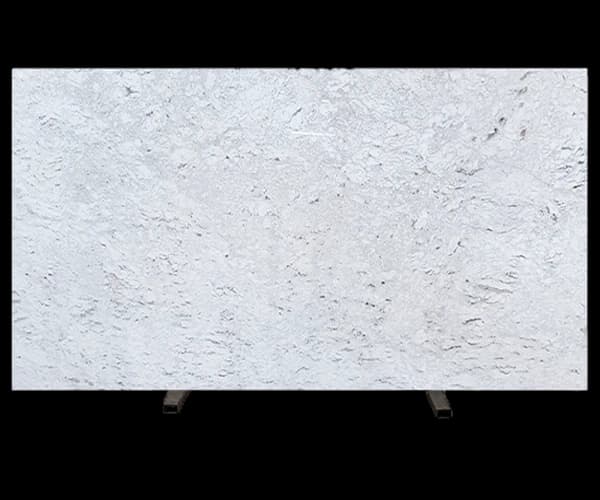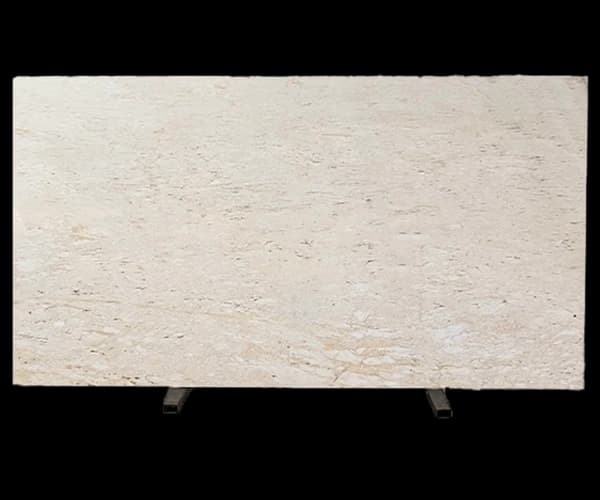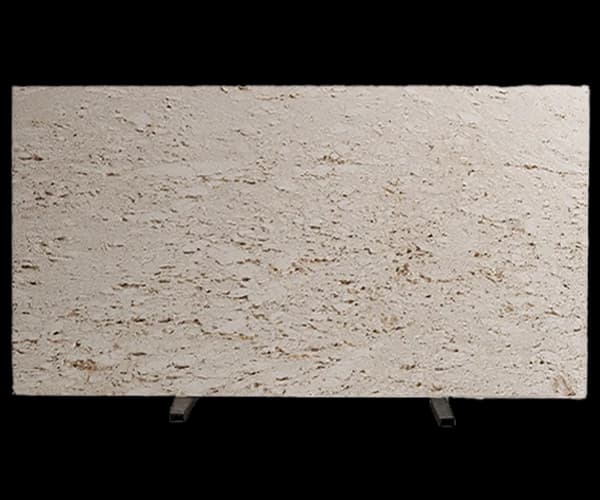
Travertine blocks are available in Ivory, Light, and Antico variations, reflecting the same natural tones seen in slabs and tiles. At the block stage, color selection is critical, as it determines the final appearance of slabs, tiles, and other processed products. Buyers often request specific shades for consistent large-scale projects. Ivory offers clean, bright tones, Light adds warm beige versatility, and Antico provides rustic character. Quarries sort and grade blocks to ensure customers receive the most suitable material for their needs.

Ivory blocks deliver bright tones and are often selected for high-end interiors where light reflection and elegance are priorities.

Light travertine blocks are versatile, yielding beige slabs and tiles that suit both residential and commercial projects.

Antico blocks provide rustic tones with antique character, often processed for Mediterranean-inspired projects and outdoor designs.
While blocks are raw materials, their processing defines the finishes available in the final products. Once blocks are cut into slabs or tiles, they can be polished for a glossy look, honed for matte elegance, brushed for texture or tumbled for rustic appeal. The finish chosen depends on the project’s aesthetic and functional requirements. Proper processing ensures durability, consistency, and the unique natural beauty of travertine.

Blocks cut into slabs can be polished to reveal veining and provide a reflective finish for luxury projects.

Block-cut slabs can be honed to achieve a smooth, matte surface suitable for modern interiors.

Brushed finishes add subtle texture to block-derived slabs, enhancing grip and warmth.

Tumbled processing of smaller block cuts creates antique-style tiles with rustic charm.
Travertine blocks themselves are rarely installed directly in construction but instead serve as the foundation for slabs, tiles, and custom products. Their applications span residential, commercial, and urban projects worldwide. Exported to factories, they are cut into large slabs for countertops and cladding, smaller tiles for flooring, and even mosaics or pavers. Blocks also allow for custom shaping into architectural elements such as columns, fountains, and sculptures.
Travertine blocks are sawn into large slabs used for countertops, wall panels, and facades.
Blocks are cut into tiles for flooring, walls, and decorative applications.
Blocks can be shaped into columns, fountains, and bespoke architectural elements.
Travertine blocks are measured and graded at the quarry before export. Sizes vary, but typical dimensions range from 2.5 to 3 meters in length, 1.5 to 2 meters in height, and 1 to 1.5 meters in width. Weights can exceed several tons per block, requiring cranes for handling. Quality grading considers color consistency, structural integrity, and veining. Buyers receive technical reports with approximate density, absorption, and compressive strength values to ensure suitability for their intended processing.
Travertine blocks require professional handling due to their size and weight. They are transported from quarries to factories where they are sawn into slabs or cut into tiles. Proper storage prevents cracks and maintains quality. Processing includes cutting, finishing, and sealing to meet project requirements. Safety measures are essential during transport and fabrication due to the heavy loads involved.
Projeniz için en kısa sürede dönüş yapalım.


